Just a quick question: How well can you swim? It may sound farfetched to you now but by 2050, Bangkok, Manila, and Ho Chi Minh (among other cities!) could all be underwater due to climate change and the rising waters it brings. And that’s just the tip of the iceberg, so to speak.
Greta Thunberg was right to call it for what it truly is: “We are in the beginning of a mass extinction”. So yes, definitely, “This is not a drill”.
Also read: Here’s How You Can Lessen Your Carbon Footprint While Travelling!
Climate change research has us drowning in the truth of rising temperatures

According to a study by US-based organisation Climate Central, around 150 million people worldwide will be displaced by 2050 due to consequential rising waters brought about by rising temperatures worldwide. This means that land that used to be above water may well be below the high-tide line in just 30 years. And we’re not just talking about uninhabited tidbits of land; imagine capital cities submerged beyond recognition.
And before we go doubting the statistics, you should know that Climate Central employed updated techniques in producing more accurate calculations, taking into consideration satellite readings, land elevation, and the average rates of rising sea levels over the years. We could go a bit more technical, but for today, let’s leave that to the brilliant scientists working to fight climate change.
Yes, it’s real — whole islands swallowed by the ocean!
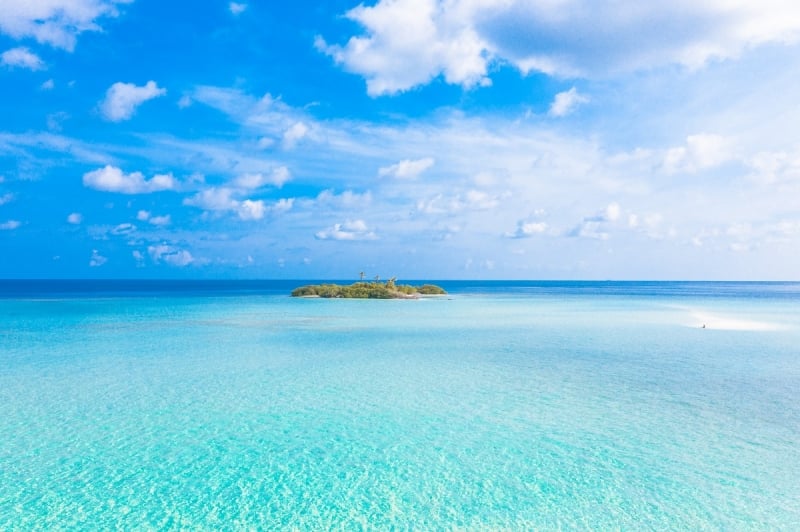
Here’s what you need to absorb, simplified: Because of pollution and our constant use of fossil fuels, the Earth heats up beyond its capacity to cool down. So yes, we contribute to the Earth’s rising temperatures! Think of it like a fever but one that never comes down, or an oven that’s left to overheat. Why do you think those wildfires get worse every year?
And because our diverse topography features glaciers and ice caps, this worsening heat causes the large-scale thawing of the Earth’s gargantuan bodies of ice. Once melted, where do you think this water will go? Hence, rising sea levels.
Unfortunately for us land dwellers, sea levels on the rise equates to us losing our homes to the water. Call it nature’s revenge, call it impossible — but it’s bound to happen if we continue burning natural resources like madmen. We aren’t invincible and Mother Nature reminds us of our mortality in ways unimaginable! Take a hint from these islands that disappeared in the last decade, proving that we stand to lose more to climate change sooner than we think.
1. New Moore Island (also known as South Talpatti Island)
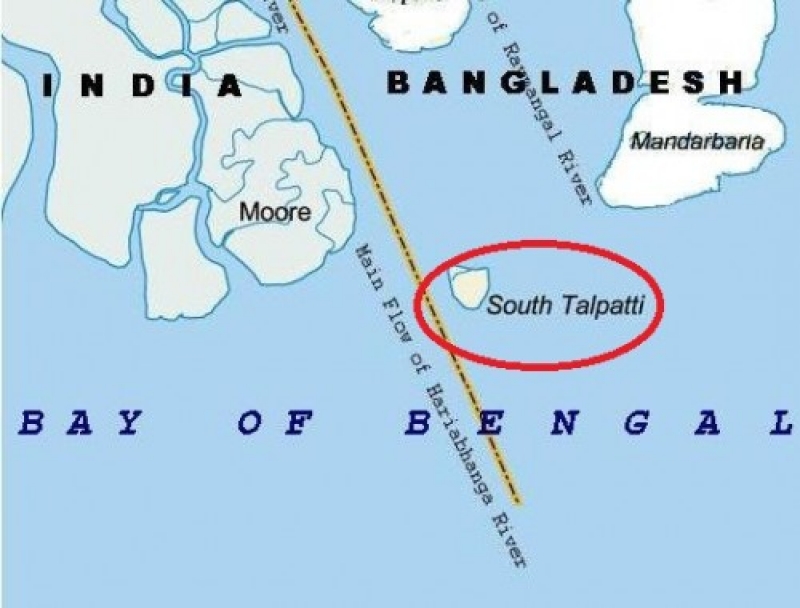
Image credit: Wikipedia Bangladesh via UCSB Geography
In 2010, a small uninhabited island in the Bay of Bengal — right by the border of India and Bangladesh — went underwater even before it could be successfully claimed by the two nations quarrelling over it. Bangladesh called it their South Tapatti Island, while India fought back by naming the shoal New Moore Island and staking their claim. The Indian government sent soldiers to occupy the island and raise its national flag on its soil in 1981.
Alas, these attempts to prove the tiny islands’ ownership were futile. Eventually, climate change stepped in and settled the 30-year debate once and for all. Now, the island has been claimed by the rising waters of the Bay of Bengal. It has never resurfaced since 2010. Sadly, nearby islands are also at risk, like Ghoramara — half of which has already been declared permanently flooded. In 1996, India also lost Lohachara Island to climate change. The islet began to go underwater in the 1980s and today, it is no more.
2. Perlamutrovy
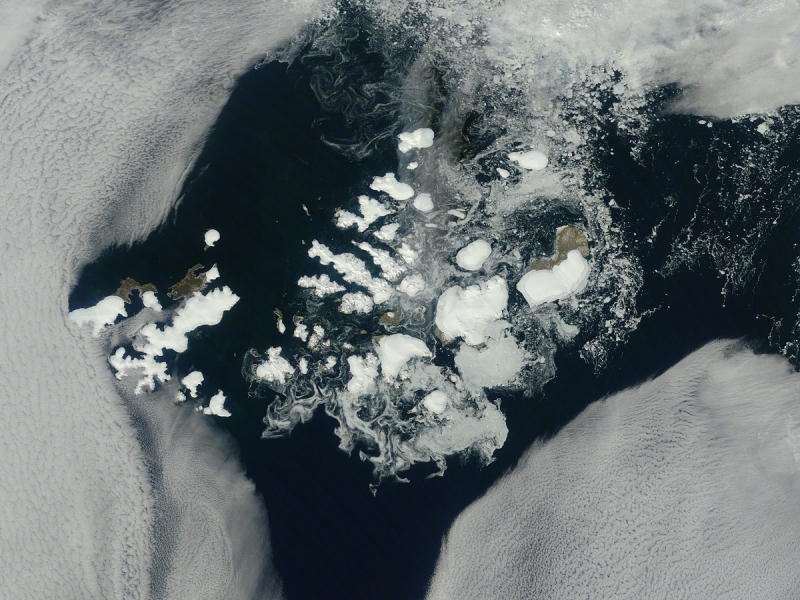
An aerial shot of Franz Josef Land in the Russian Arctic | Image credit: NASA Goddard Space Flight Center
Since the Arctic is home to the world’s icy spectacles, then it is all the more prone to casualties brought about by the “big thaw”. There used to be a speck in the Russian Arctic archipelago — an island right beside Graham Bell Island in Franz Josef Land, which is under Russia’s Arkhangelsk Oblast. It was called Perlamutrovy; in English, it translates to “mother of pearls”.
In 2017, scientists were baffled when they could no longer locate the island’s whereabouts via satellite. Truly enough, an expedition held in 2018 exposed the saddening truth: Perlamutrovy was gone and in its place was open water. The only plausible explanation is that the Arctic waters have swallowed the island whole. Experts also agree that the island could have been washed away little by little before finally meeting its watery demise and plunging below the depths.
Although islands appearing, disappearing, and reappearing are considered common occurrences in the Arctic, scientists don’t deny that these phenomena are obvious effects of climate change. And as tiny and uninhabitable as it might have been, Perlamutrovy is more than just a small loss — it’s a precursor of things to come.
3. East Island
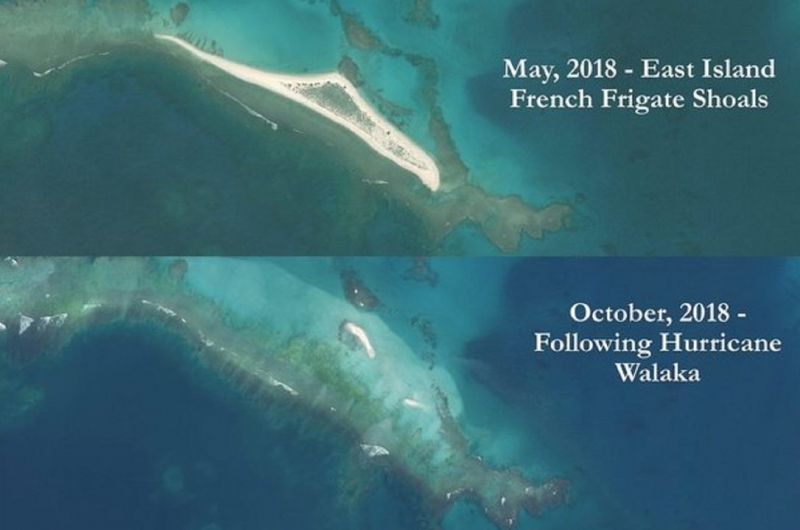
Image credit: U.S. Fish and Wildlife Service
It was in October 2018 when experts discovered that Hurricane Walaka (which was a devastating category five) took an entire island with it in its wake. East Island, a remote 11-acre island, was around 550 miles from Honolulu in Hawaii. It was a part of a grouping of islands named the French Frigate Shoals. Although uninhabitable to humans, East Island was a haven to the wildlife dependent on dry, sandy surfaces in the vast Pacific Ocean.
A statement released by the Papahānaumokuākea Marine National Monument confirmed that East Island was among the lands that served as “…important nesting grounds for threatened green sea turtles and pupping grounds for endangered monk seals”. Imagine the confusion of these creatures; the last time they visited, their nesting ground still stood erect! Now it’s just open water. If this didn’t break your heart, I don’t know what will. (Brb, wiping my tears.)
Even if Hurricane Walaka didn’t make headlines (primarily because it did not reach human-inhabited islands), it did devastate East Island. In fact, the islet took a direct hit. And since sea levels have been rising, it was no match for Hurricane Walaka’s storm surge. To this day, drone operators and experts monitor East Island, or rather, what’s left of it — a mass of sand and gravel that you could make out under the deep, blue waters of the Pacific.
4. Ensabe Hanakita Kojima
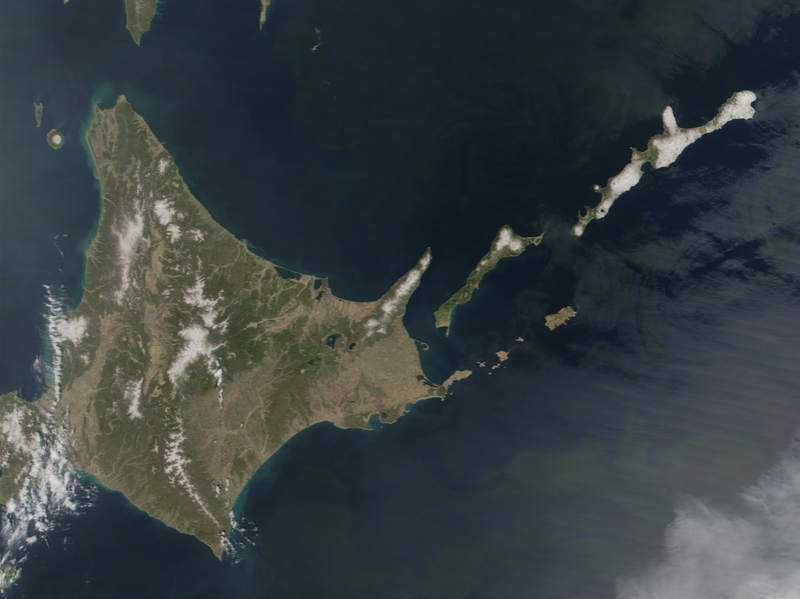
Hokkaido and Japan’s Northern Territories | Image credit: Visible Earth is part of the EOS Project Science Office at NASA Goddard Space Flight Center
Climate change is never a laughing matter, but the odd case of Ensabe Hanakita Kojima in Japan is quite the *facepalm* moment. Why, you ask? Because nobody noticed it was already gone.
Thanks to author Hiroshi Shimizu, who was writing a book about Japan’s ‘hidden islands’, authorities were alerted in late 2018. They were told that Ensabe Hanakita Kojima was no longer where it had been. And just like that, Japan lost one of its islands.
Like most islands on this list, Ensabe Hanakita Kojima was small and uninhabitable. But it did serve a sort of diplomatic purpose: It signified the western edge of a disputed territory. The islet was, in fact, part of what Japan claims as its Northern Territories, a small island chain also being claimed by Russia. The latter named the same land formations as its Kuril Islands.
I guess they have one less island to fight about now. But instead of squabbling over who owns what, when will we ever learn to just work together to save what’s left of our Earth?
Also read: 12 Habits We Can Quit For More Eco-Friendly Travels
5. Parts of the Solomon Islands
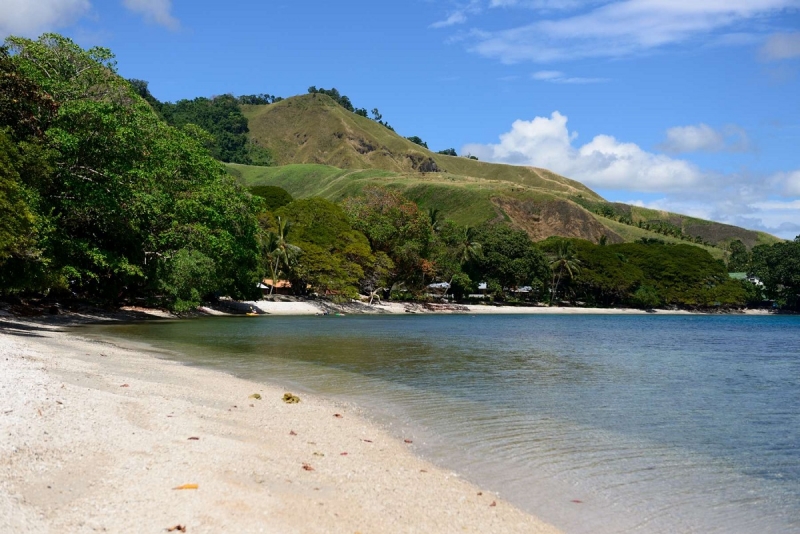
Visale Beach in the Solomon Islands | Image credit: StewyOz
Now, this item was all over the news in 2016. That year, a study revealed that five of the Solomon Islands were completely devoured by the Pacific Ocean. The last one standing went under the area’s turquoise waters in 2011. And experts say Solomon Islands, a true tropical paradise, will lose more of its land in the coming decades.
Although the scientific world only released official data in 2016, the study only confirms what locals have been saying and experiencing. Inhabitants of the Solomon Islands have been known to say that their homes are disappearing, slowly being swallowed by the ocean’s rising levels. The five lost islands were called Kale Island, Rapita Island, Kakatina Island, Zollies Island, and Rehana Island; they weren’t permanently inhabited by locals, but they did prove useful to fishermen making a livelihood in the area.
To this day, locals of the lower-lying Solomon Islands are continuously forced to relocate to higher ground because they keep losing their houses to the ocean. Will you wait till you lose yours the same way, too?
6. Islands in Micronesia
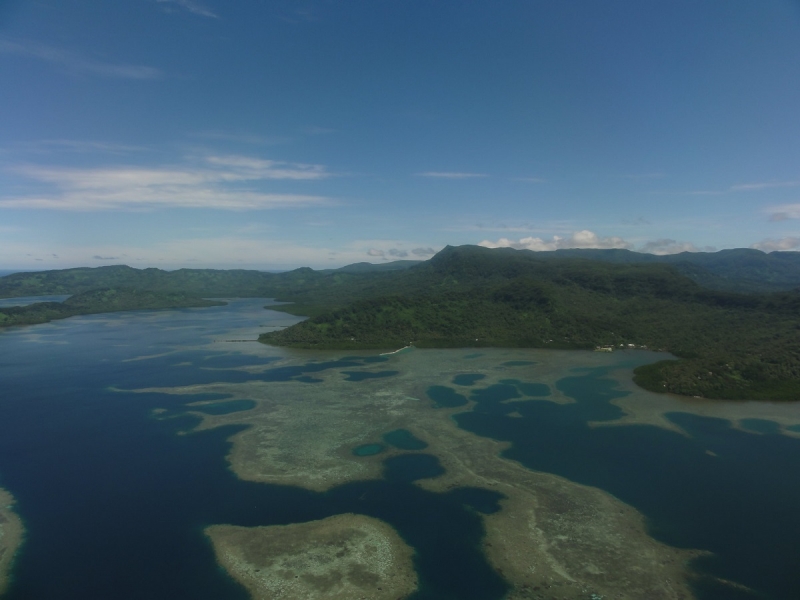
The landscape of Micronesia | Image credit: Department of Foreign Affairs and Trade
As shocking as it might sound, it seems that islands disappear all the time. But it’s one thing to let the environment take its natural course; it’s another to actually cause these disappearances. That’s the sad thing about climate change — we caused it, we worsened it. Going back to my reference early on in this article: If the Earth is suffering from a fever, then eco-challenged humans comprise the yucky virus that’s causing the temperature flare-up.
In 2017, another study confirmed information that explained why islands in Micronesia have been disappearing underneath the sea. Not that I still need to spell it out at this point, but yes, the Micronesian islands of Laiap, Kepidau en Pehleng, Nahlap, Nahtik, and Ros were all casualties of this environmental crisis we call climate change. Go figure.
Sad but very true: Micronesia boasts of a rich territory with more than 600 islands, but living on the smaller islets is now considered a serious risk. In the past years, scientists were quick to conclude that some of the world’s islands are indeed sinking, but there would still be enough time to reverse these effects or at least adapt to this change. But what happened to East Island totally disproves these claims; we can now lose land to water overnight! If you need a refresher, head back to item #3 on this list.
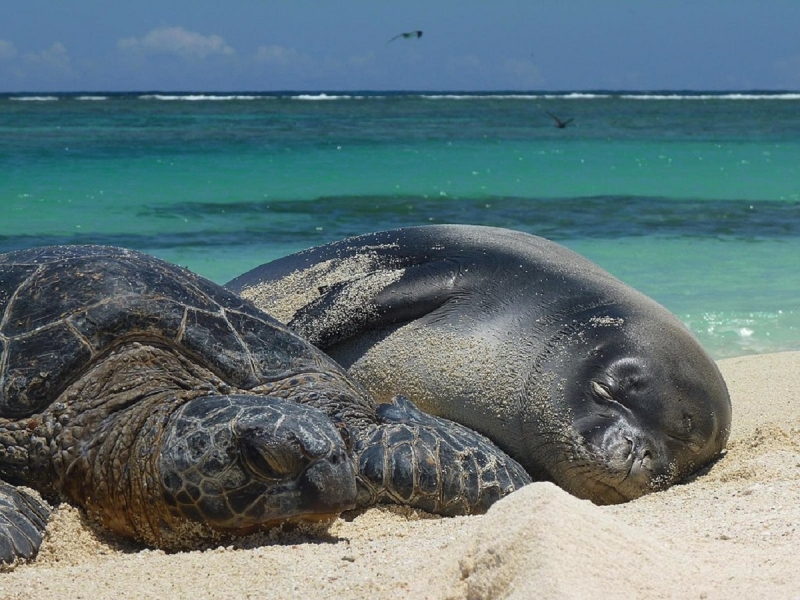
A green sea turtle and a monk seal, two species that were directly affected by the loss of East Island in Hawaii. It’s not just you who’s losing a home to climate change and rising waters. | Image credit: National Marine Sanctuaries
We’ve lost more islands before the last decade — too many to mention in one sitting. And countries continue to sink as you’re reading this, like the Marshall Islands, the nation of Kiribati in the Pacific, and idyllic Maldives. Can you imagine your motherland, your hometown, your favourite destination being wiped off the world map? For some, that reality is not far off.
Experts say we’ll be losing more land and lives in the decade that just started, and the ones that have yet to come. Islands don’t always have a swift demise; the process of this loss may be a slow and painstaking one, too. Do we just stand by as this happens? I don’t think we’re ready to grow fins and gills just yet.




